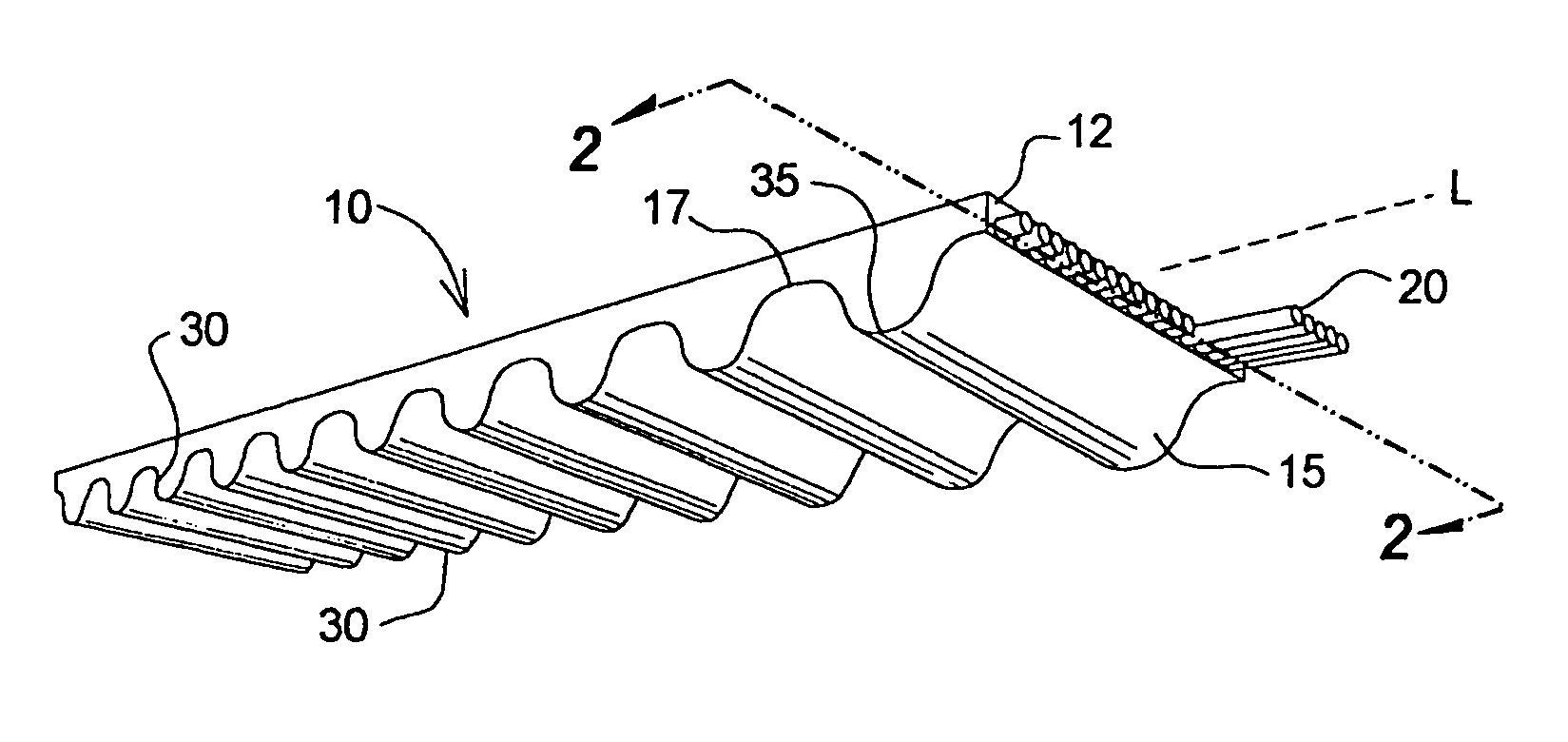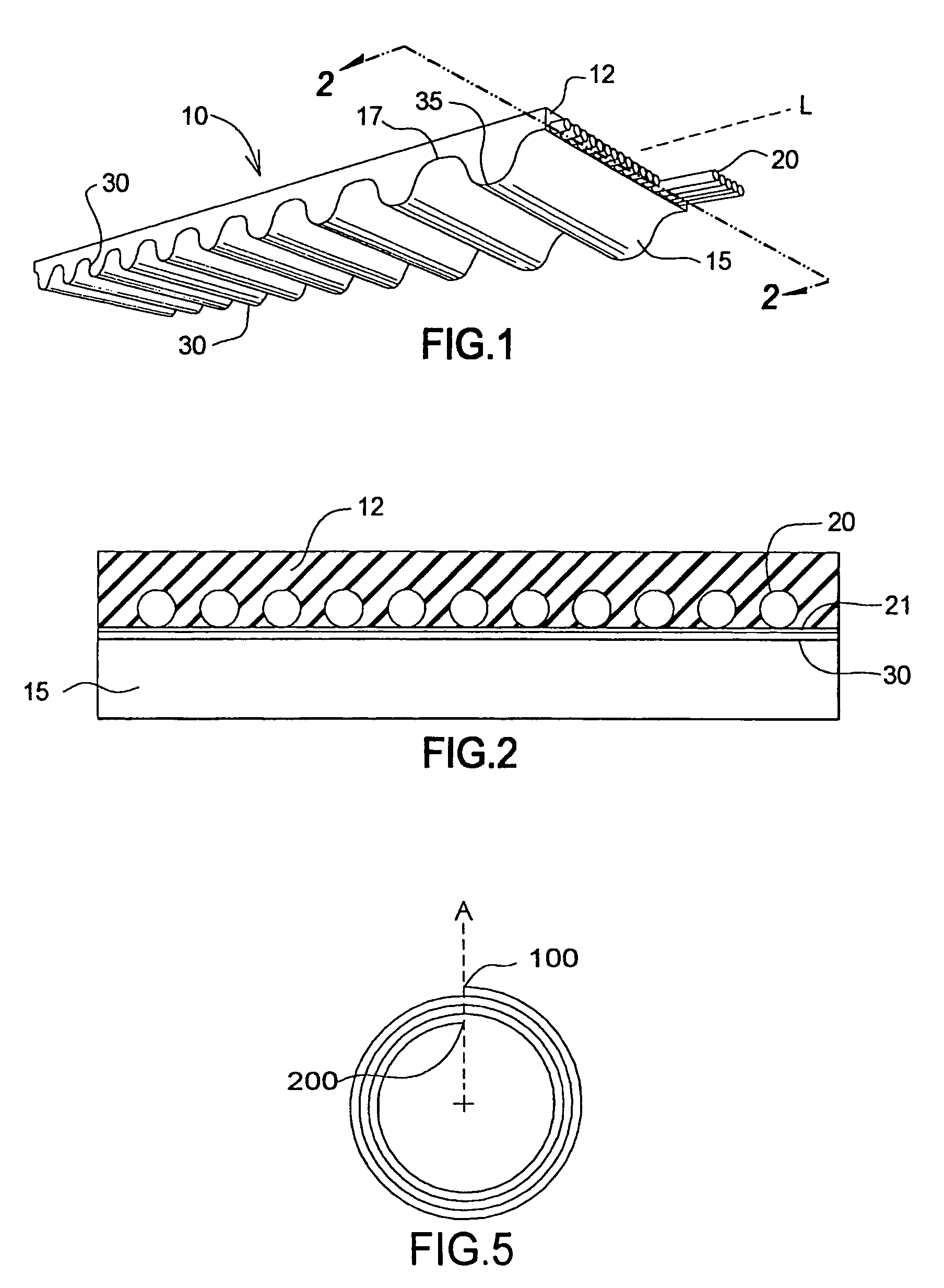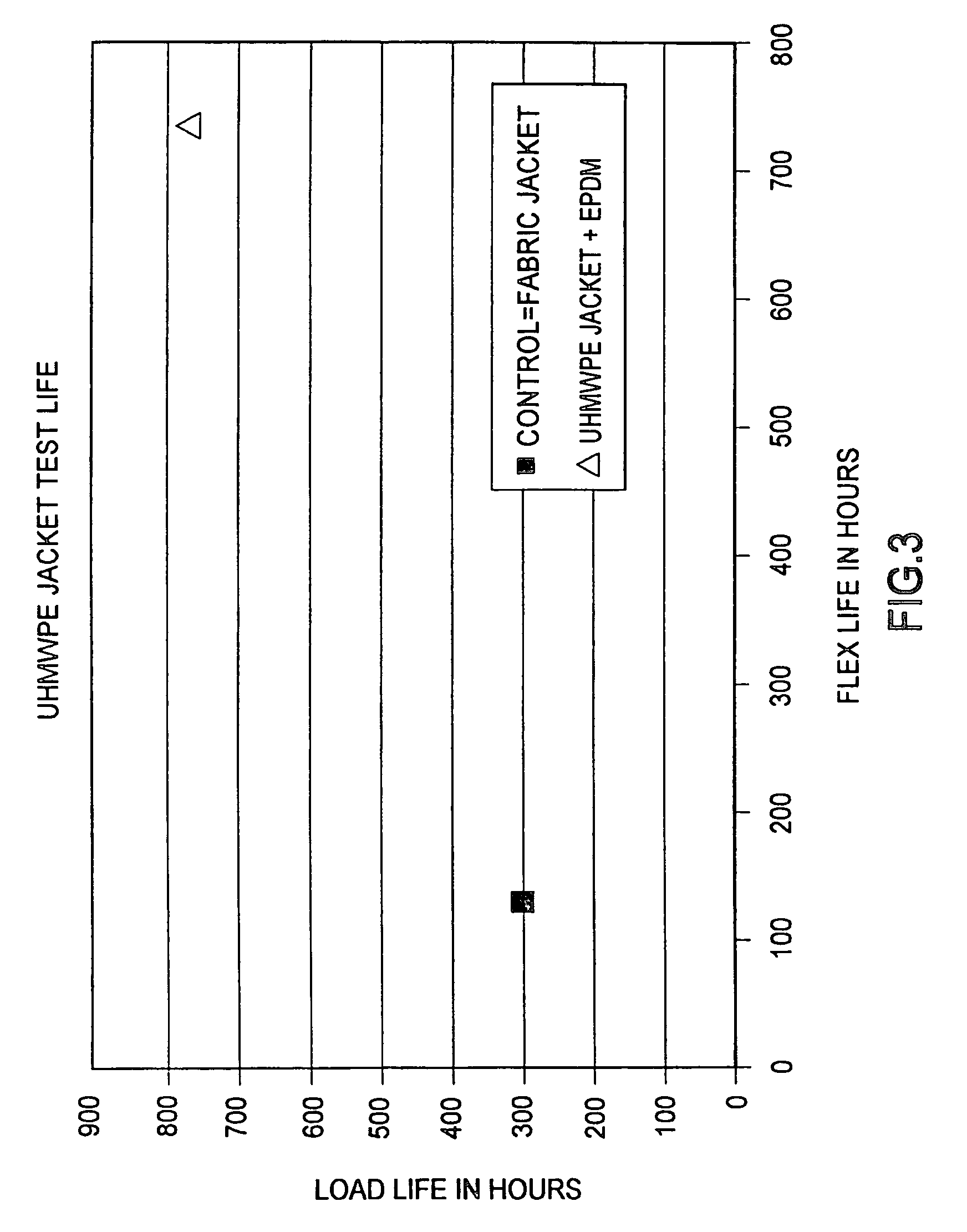Thermoplastic jacket belt
a jacket belt and thermoplastic technology, applied in the direction of vehicles/pulleys, mechanical equipment, other domestic objects, etc., can solve the problems of affecting the operation of certain types of equipment, affecting the service life of the belt, and not being able to have electrically conductive materials coated parts, etc., to achieve superior abrasion resistance, reduce the cost of the belt, and reduce the softening poin
- Summary
- Abstract
- Description
- Claims
- Application Information
AI Technical Summary
Benefits of technology
Problems solved by technology
Method used
Image
Examples
example 1
[0075]Nine layers of 3-mil (1.1 mm total thickness) Dartek EN560 polyamide 6,6 thermoplastic film layered together. The peak melt temperature is approximately 220° C. On top of the film layers is placed a 3 mm thick layer of EPDM, formulated as above except for 3.1 phr of Vanderbilt's Varox 130XL (2,5-dimethyl-2,5-di(t-butylperoxy)-3-hexyne) being substituted for the 4 phr of Vulcup. The peroxide raises the cure temperature of the belt body approximately 20° C., making it more suitable for use with the polyamide film. The materials and mold are placed in a mold under a pressure of 250 psi. The mold is brought to a temperature of approximately 210° C. to soften the film, form the teeth, and cure the body. Then the mold is cooled to 175° C. while maintaining pressure of 250 psi before removal. Cooling is performed to resolidify the thermoplastic film for better tooth shape retention. This is necessary with crystalline thermoplastic materials that have very sharp melting points and low...
example 2
[0076]Eleven layers of 2.1-mil (0.9 mm total thickness) Dartek SF502 polyamide 6,6 thermoplastic film, having a peak melt temperature of 260° C., are placed in a mold with the modified EPDM body rubber as in Example 1. The materials and mold are placed in a bag mold under a pressure of 200 psi. The mold is brought to a temperature of approximately 240° C. as quickly as possible (about 8 minutes) to soften the film, form the teeth, and cure the body. Rapid heating is required to obtain good tooth formation before the body cures. Then the mold is cooled to 200° C. under pressure before the belt is removed. The resulting belt exhibits excellent tooth formation and adhesion, but with limited flexibility because of the brittleness of this polyamide film. It is expected that a total film thickness of 0.1 to 0.2 mm for this polyamide film would make a sufficiently flexible belt.
example 3
[0077]Twenty layers of 1-mil (1.2 mm total thickness) Capran 100 polyamide 6 thermoplastic film, having a peak melt temperature of 220° C., were placed in the mold with the body rubber as in Example 1 and 2. The materials and mold are placed in a bag mold under a pressure of 250 psi. The mold is brought to a temperature of approximately 210° C. to soften the film, form the teeth, and cure the body. Then the mold is cooled to 175° C. under pressure (250 psi) before removal.
PUM
| Property | Measurement | Unit |
|---|---|---|
| thickness | aaaaa | aaaaa |
| thickness | aaaaa | aaaaa |
| melt temperature | aaaaa | aaaaa |
Abstract
Description
Claims
Application Information
 Login to View More
Login to View More - R&D
- Intellectual Property
- Life Sciences
- Materials
- Tech Scout
- Unparalleled Data Quality
- Higher Quality Content
- 60% Fewer Hallucinations
Browse by: Latest US Patents, China's latest patents, Technical Efficacy Thesaurus, Application Domain, Technology Topic, Popular Technical Reports.
© 2025 PatSnap. All rights reserved.Legal|Privacy policy|Modern Slavery Act Transparency Statement|Sitemap|About US| Contact US: help@patsnap.com



